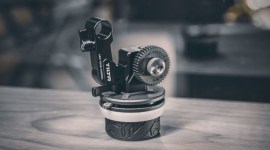
Why Using a Shot List Will Save Your Next Project
A detailed shot list will save your production time, energy, and effort, and (most importantly) it will help help you create a better product.
Cover image via JKStock.
A shot list is one of the most important assets you can bring to a set to ensure a smooth and efficient production. The more preparation you put in before you shoot, the better your end product will become. Your shot list is essentially the blueprints for the visual structure and photography of the film. It contains the “raw materials” that you need to compose the film photographically. An architect would never consider building a structure without blueprints. A director or cinematographer should also never consider creating a film without their shot list.
Creating a Shot List
When creating a shot list, the director of the film will sit down with the cinematographer and discuss their vision for the film. While poring over the script’s pages, the director and cinematographer will collaborate and discuss which shots will best convey the emotion of the film. Once the director and DP agree upon a shot for a scene, they will then list it in the shot list.
What’s in a Shot List?
The contents of a shot list vary by the needs of each production. A heavy VFX film will typically go into more detail about how crew will get the shot. In a simple sense, a shot list will contain the scene number, followed by the shot number. This makes it easier to coordinate where a given scene appears in the course of the project — you’ll even see this info written on the camera slate.
Followed by the scene and shot number will be the shot size. For example: is the shot a medium or a wide shot? Conversations between the director and the DP will clarify what type of shot will best tell the story and help orient the audience.

Image via JKStock.
Camera Movement
A key component in a shot list is identifying how exactly the camera will move throughout the shot. For example, will the camera be on a dolly or sticks, or will it be on a gimbal? By detailing camera movement in the shot list, you can quickly identify what equipment you need for each shot.
Lens Selection

Image via JKStock.
Personally, I always love to include potential lens focal length for a scene. It helps me quickly recall the mood and tone that I’m going for in the scene. Also, pre-selecting a lens helps move things along more quickly on set.
Notes & Descriptions
I always include detailed notes about the shot, the emotion it’s trying to convey, and what part of the story it tells. It’s basically a quick explanation of why you’re getting this shot in the first place. Having this information ready on a fast-paced set is invaluable. This way, when shot 14B is coming up, you don’t have to scramble to the script or embarrassingly ask the director which part of the script you’re working on. With detailed notes, you can quickly orient yourself and accomplish the task at hand.
How to Make Your Own Shot List
There are a ton of great resources out there to help you create your own shot list. You can find everything from apps to spreadsheets. One of my personal favorites is this customizable Google Sheet. I use this for nearly every production. StudioBinder also offers great shot listing options. As you begin to create your own shot list, you’ll find what works best to detail your plan and articulate your vision.
Looking for more ways to improve your production? Check out these articles.
- Learn to Appreciate the Subtle Art of Good Production Design
- Introducing Digital Production Calendars for Video Professionals
- The Walk and Talk: Crafting Exposition That Won’t Bore Your Audience
- Cinematography Tip: Lighting Your Production with the Inverse Square Law
- Cinematography Tip: Training Your Eye Between Shoots






